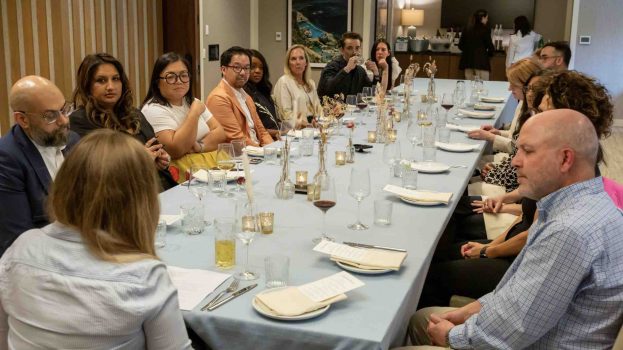One year ago this week, the previously independent, Canada-based agency network Sid Lee was acquired by Kyu, an “agency collective” based in New York and backed by Japan’s Hakuhodo DY Holdings. Kyu was created as a way to use creativity from multiple sources to “propel the economy and society forward,” focusing on big ideas and issues, like “The Powerful Now,” which is applying creativity to the topic of ageing.
Though it’s trying to tackle big issues, one thing that is key to Kyu’s model is its size. “Kyu” is the Japanese word for “nine,” and it’s looking to keep its number of core members small to ensure collaboration is easier. With units devoted to architecture, media, design, experience and tech, integration is something Sid Lee has built itself around.
“So far, not a lot has changed, and that’s how we wanted it,” Bertrand Cesvet, chairman of Sid Lee, told strategy during the 2016 Cannes Lions Festival of Creativity. “For the last 23 years we’ve been trying to solve bigger and bigger problems. We saw creativity was being applied to bigger issues and that we needed more people around the table to solve them. These are people who are like-minded but do things we don’t do, which just adds more skill-sets around the same table.”
Finding ways to encourage collaboration between a company’s offices and assets has been an increasingly common goal in the industry, the biggest player possibly being Publicis Groupe, which restructured at the end of 2015 to “break down the silos” between its holdings.
However, Michael Birkin, CEO of Kyu, says not all collaborations are created equal. Prior to Kyu, Birkin was CMO at computer manufacturer Acer, a company which has to collaborate with a great deal of other companies and manufacturers to make a single product.
“The collaborative process that we went through there was a very different one to the one at Kyu where it’s a coming together of creative service companies, where, candidly, there’s been more defensiveness in the inclusion of other people in providing a single solution,” Birkin says. “You have to look at the DNA of organizations to see what they’re really prepared to do. At Kyu, each partner has a say in what we do and the way we do it, and that’s difficult for more established holding companies to do because of their scale.”
“It’s easier for companies like us to collaborate around big thinking instead of forcing ERP systems and accounting systems,” adds Cesvet.
Though the acquisition may not have changed the way Sid Lee operates, it has had an impact. The agency shares a small number of clients with Ideo, a global design firm Kyu invested in earlier this year, which has been handling design and user experience design while Sid Lee focuses on storytelling, Cesvet says. The broader Kyu collective was also brought in to help with C2 Montreal, something that will continue and Cesvet believes will allow the conference to accelerate its growth.
While Kyu’s main mission is on big, societal projects like “The Powerful Now,” the way the group is set up will likely have an impact on they way its members deliver solutions to clients.
“We believe creative services need to be delivered differently over the next 30 years or so if they’re going to be searched for as the solutions to the problems,” Birkin says. “That’s not to say big firms can’t do it, but we’ve been set up in a particular way where, if we can limit our core units, we have a chance of maintaining that different approach. We can come together, not just on particular assignments and initiatives, but on the way in which we develop Kyu itself.”
“It validates what we’ve been saying for a long time,” Cesvet adds. “The holding companies know they have to do this, but the boundaries are big and take time. We’ve been running [Sid Lee] Architecture for seven years, and I can say we’re finally making it happen seven years later, at a very small scale. I can only imagine how hard it would be if you want to integrated some of these big companies.”
























